Leather recliner sofas are a fantastic way to combine comfort and style in your living space. They offer that cozy feeling of sinking into soft leather while you kick back and relax at the end of a long day. Plus, with plenty of designs to choose from, you can easily find the perfect match for your home decor.
Leather Recliner Sofas
Luxurious leather recliner sofas for premium comfort and style in your living room
Product List
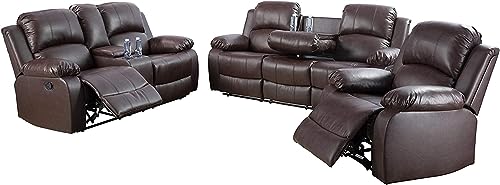
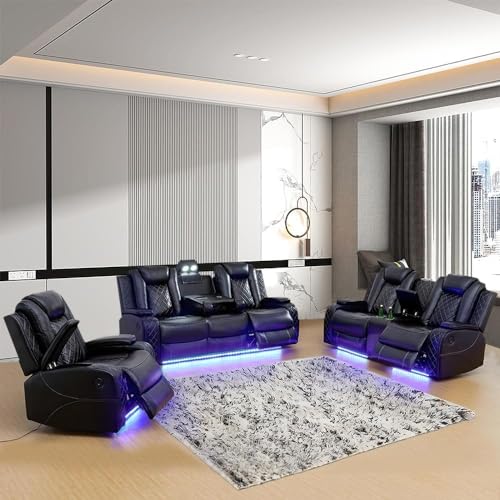
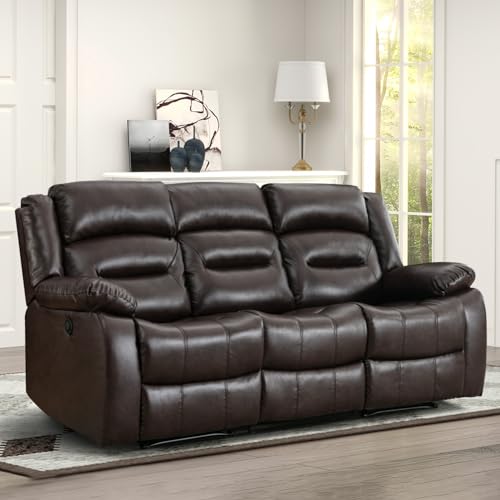
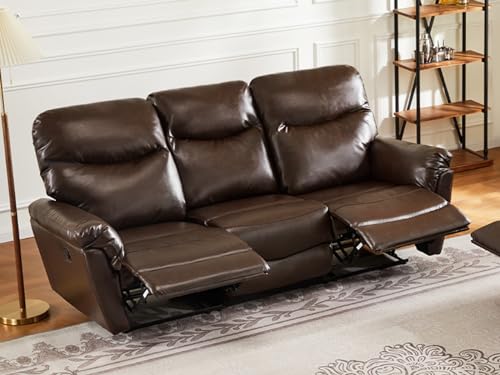
LARMACE Faux Leather Recliner
Larmace
Product Review Score
4.59 out of 5 stars
117 reviews$999.99 $699.99
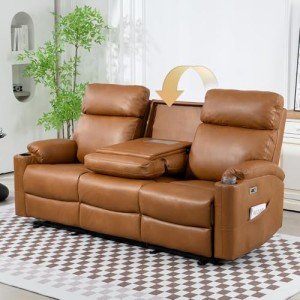
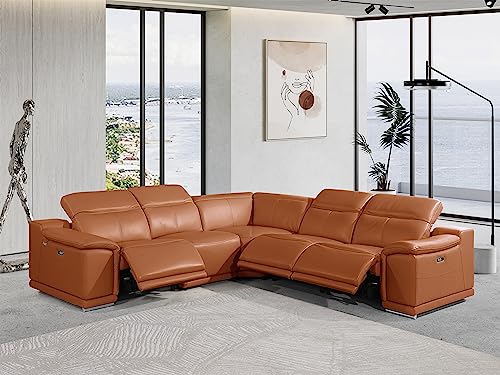
When it comes to home furniture, recliner sofas hold a premium place in the hearts of many homeowners. Combining comfort, luxury, and functionality, leather recliner sofas take this experience to an entirely new level. They have evolved from simple seating arrangements into fashionable statement pieces that provide unparalleled relaxation. In this blog post, we will explore the features, benefits, and maintenance of leather recliner sofas while helping you understand why they may be the ideal addition to your living space.
What Makes Leather Recliner Sofas Special
Leather recliner sofas stand out for several reasons, including:
- Luxury Aesthetic: The rich texture and sheen of leather add a touch of luxury to any room.
- Durability: High-quality leather is known for its strength and resilience, making it a long-lasting option.
- Comfort: Recliner sofas offer adjustable seating positions, promoting optimal comfort.
- Variety: Available in multiple styles, colors, and sizes, leather recliner sofas can fit into any decor scheme.
| Feature | Description |
|---|---|
| Material | Premium leather or leather blend |
| Mechanism | Manual or electric reclining options |
| Seats | Generally accommodates two to three people |
| Styles | Traditional, contemporary, modern, sectional |
| Price Range | $500 - $4000 depending on quality and brand |
Advantages of Leather Recliner Sofas
Leather recliner sofas come with an array of benefits that make them a popular choice. Here are the most notable advantages:
1. Unmatched Comfort
After a long day, nothing feels better than sinking into a recliner. Leather recliner sofas allow users to adjust their seating position, catering to individual comfort preferences.
2. Easy Maintenance
While fabric sofas often require intensive care, leather sofas can usually be cleaned with a damp cloth. Regular conditioning with leather cleaner helps enhance durability.
3. A Timeless Appeal
Leather has a timeless quality that never goes out of style. Its natural aging process often enhances its beauty, leading to a desirable patina.
4. Hypoallergenic Properties
Leather is less likely to trap dust, pet hair, and allergens compared to fabric sofas, making it an attractive option for allergy sufferers.
5. Resale Value
High-quality leather recliner sofas retain their value well over time, making them a potential investment piece.
6. Variety in Options
Whether you prefer a classic brown color or a modern gray shade, leather recliner sofas come in a multitude of styles and finishes to match your interior design.
Disadvantages of Leather Recliner Sofas
While leather recliner sofas have numerous advantages, it's essential to consider the potential drawbacks:
1. Higher Initial Cost
Leather recliner sofas often have a higher purchase price compared to fabric sofas. However, this can be mitigated over time due to longevity.
2. Temperature Sensitivity
Leather can become hot in summer and cold in winter, which may not be ideal for every homeowner.
3. Susceptibility to Scratches
While durable, leather can be prone to scratches and requires careful handling, especially in households with pets.
Choosing the Right Leather Recliner Sofa
Finding the perfect leather recliner sofa involves several considerations such as:
| Criteria | Considerations |
|---|---|
| Size | Measure your space; consider both width and depth |
| Style | Choose a design that complements your existing decor |
| Reclining Type | Decide between manual and electric options |
| Budget | Determine your price range based on your needs |
| Comfort Level | Test for comfort in-store before purchasing |
Popular Styles of Leather Recliner Sofas
- Traditional: Features classic designs with intricate details.
- Contemporary: Sleek lines and minimalistic forms.
- Sectional: Spacious, modular designs fit for larger living areas.
- Home Theater: Tailored for cinema-like experiences with built-in cup holders and USB ports.
Maintenance Tips for Leather Recliner Sofas
Proper maintenance can extend the life of your leather recliner sofa. Here are some simple tips:
- Regular Cleaning: Wipe down surfaces weekly with a damp cloth to remove dust and prevent dirt build-up.
- Conditioning: Use a leather conditioner every 6-12 months to keep the material supple.
- Avoid Direct Sunlight: Position your sofa away from direct sunlight to avoid fading.
- Promptly Address Stains: Use a clean cloth and leather cleaner to treat spills immediately.
Leather recliner sofas provide a unique blend of comfort, style, and longevity. As they become increasingly popular in homes across the globe, their appeal is undeniable due to their luxurious texture and versatile functionality. By weighing their advantages and disadvantages, you can make an informed decision that suits the needs of your household.
FAQ
1. What is the average price of leather recliner sofas?
The price varies significantly based on quality and size, ranging from approximately $500 to $4000.
2. Are leather recliner sofas suitable for households with pets?
While leather is more resistant to allergens and stains, it may be prone to scratches from pets. High-quality leather may be more durable than synthetic materials.
3. How can I clean my leather recliner sofa?
For general upkeep, use a damp cloth. For deeper cleaning, employ a leather cleaner and follow with a conditioner.
4. What are the different reclining mechanisms available?
Leather recliner sofas come in manual mechanisms that require physical pulling of a lever and electric options that require pressing a button.
5. How long do leather recliner sofas last?
With proper maintenance, a high-quality leather recliner sofa can last upwards of 10-15 years or even longer.
In summary, leather recliner sofas are not just a purchase; they are an investment in comfort and style for your home. Whether you are curling up with a book or enjoying movie night with family, these luxurious sofas elevate the experience to remarkable heights.